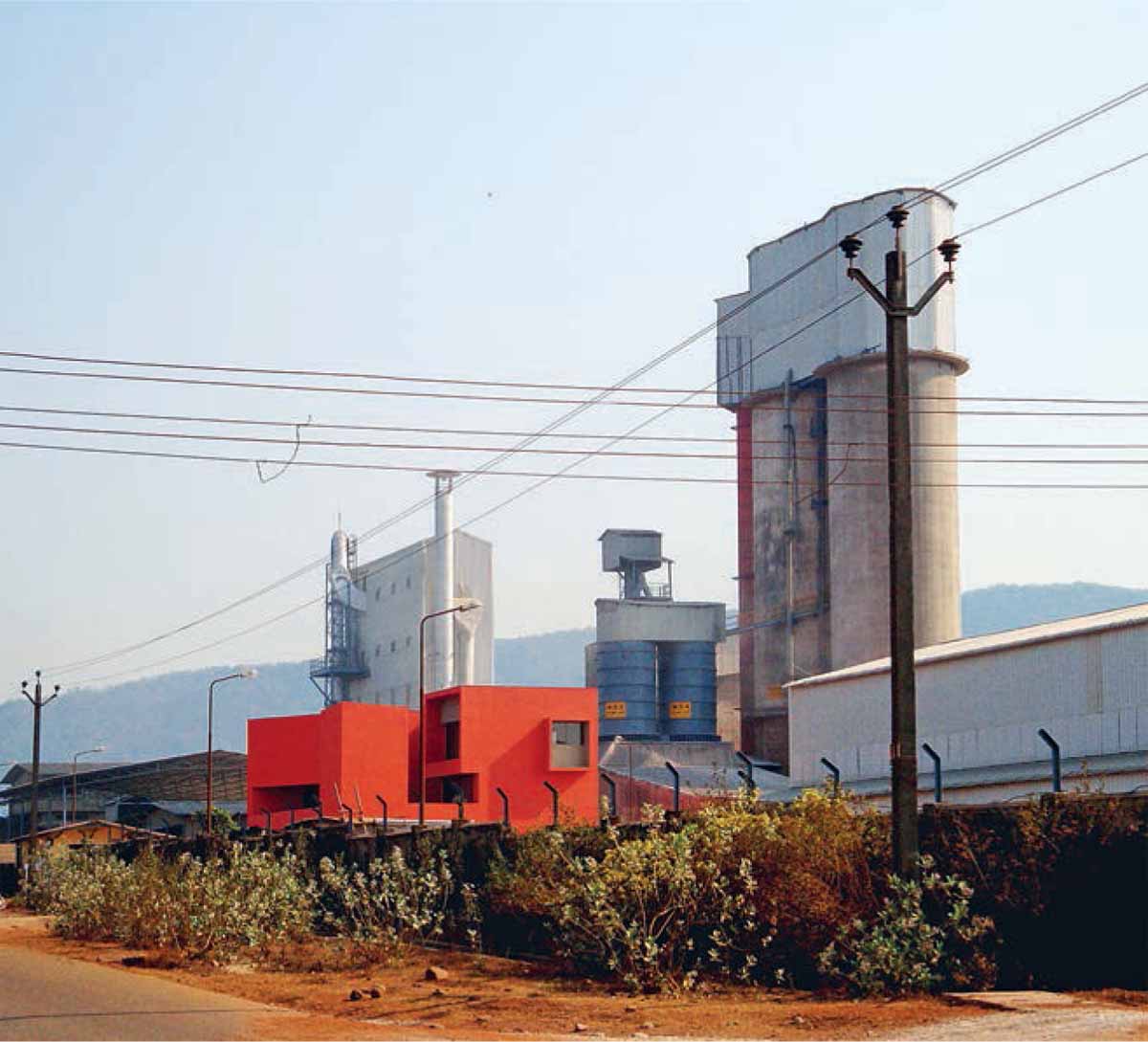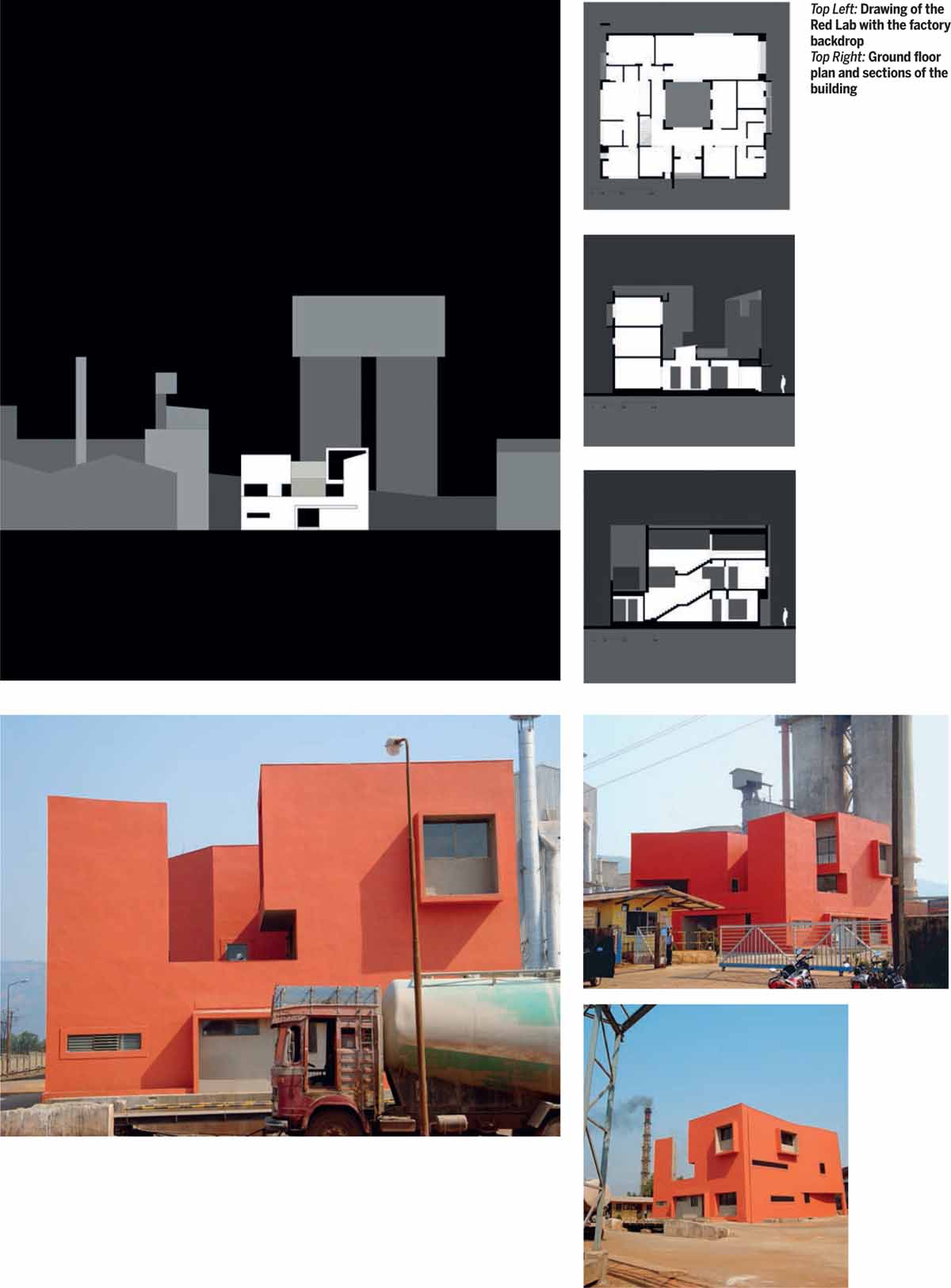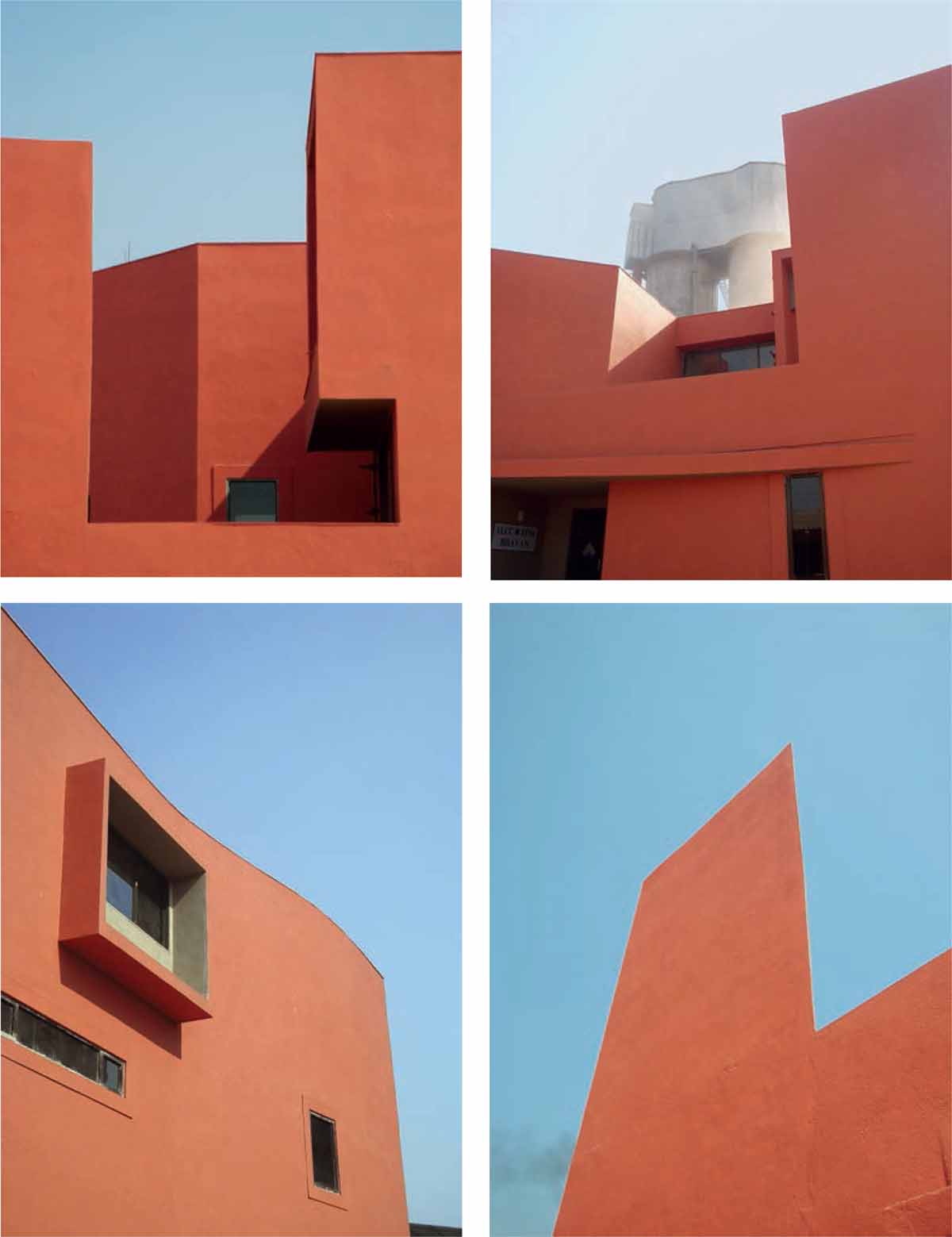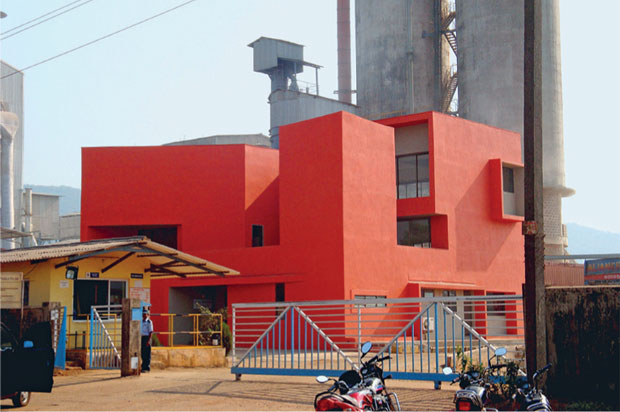It’s not difficult to make a building stand out within a setting by creating a stark visual contrast. It is, however, not easy to introduce such contrasting insertions and make an overall setting a lot better. To accomplish this, the new object cannot be a whimsical gesture, but rather a conscious creation whose formal and visual characteristics have been carefully conceived after reading the aesthetic qualities of the surroundings. In harsh settings like industrial complexes, for example, a distinct artistic element seen against the existing backdrop can not only enhance visual navigation but also help mitigate the harsher qualities of the place.
“Why do we need an architect for this small building when we have built this entire cement factory from scratch?” was the general opinion of most of the people who had helped set up the Micro-Fine cement factory on the eastern border of Goa. The company’s Chief Engineer, however, firmly begged to differ. He believed that architecture could make a difference; that a new building containing labs and offices could not only create the work space they needed, but unlike the existing factory buildings, create a recognisable image for the company as a whole.
From the very beginning, the modest site for this building was dominated by the unusual and intimidating scale of steel structures towering above the surrounding grey and dusty industrial area. Huge mountains of raw material, grey smoke, dusty steel structures and factory workers and machines covered with fine cement powder, made for an unforgettable sight. The new building was to be built on a small plot next to the factory’s entrance gate, with the colossal industrial silos as its visual backdrop.
Reading the surroundings, considering the dominating scale of the factory and keeping in mind the limitation of budget, one thing was very clear: this building had to be a unique object, almost like a sculpture with a strong colour, to make it stand out within the dusty setting.
The building had a simple plan: Rooms were organised around a small courtyard and this open space was covered with a skylight to ensure that the interior would be free from industrial dust. The laboratory spaces were located on the ground floor with the offices on the upper two floors. The building was intentionally made three storeys high to give it a scale compatible with the adjacent warehouse. Windows were placed so that they did not line up with each other, making it visually difficult to read the number of building floors from the outside.

The water tank became a unique sculptural feature of the composition. It was designed as a triangular plan and extruded as a corner tower facing the entrance gate. The sharp corners of the tank complemented by the angular wall of the second-floor conference room gave the building a unique sculptural look. On the one hand the abstract building form recalled the factory’s abstract cement-producing machines. On the other, it confirmed the plasticity of cement as a building material that enabled the creation of abstract architectural forms.


To accent the visual qualities of the sculptural building further, it was uniformly rendered in bold red. This monochromatic exterior not only helped in reading its bold forms and deep shadows, but also accentuated its presence as a red jewel amongst all the grey utilitarian factory structures.
The Chief Engineer was right. Architecture, as a complicated form of art, can and does make a difference. There are places where a building needs to fit in. There are places where a building needs to stand out. Deciding what to do, when, how and why, is what the art of architecture is all about.
Sachin Agshikar is a practicing architect based in Mumbai, whose work includes numerous housing, hotel, school and market hall projects. He formerly worked with the noted architect Charles Correa as an associate on the Cancer Research Centre for the Champalimaud Foundation in Lisbon.
Project Data:
Client: Counto Microfine Products Pvt. Ltd.
Architect: Sachin Agshikar
Structural Engineer: Madhav Kamat and Associates
Electrical Consultant: Ms. Tamba Electricals
Contractor: Alcon Construction
Cost: Rs. 80,00,000



Comments (0)